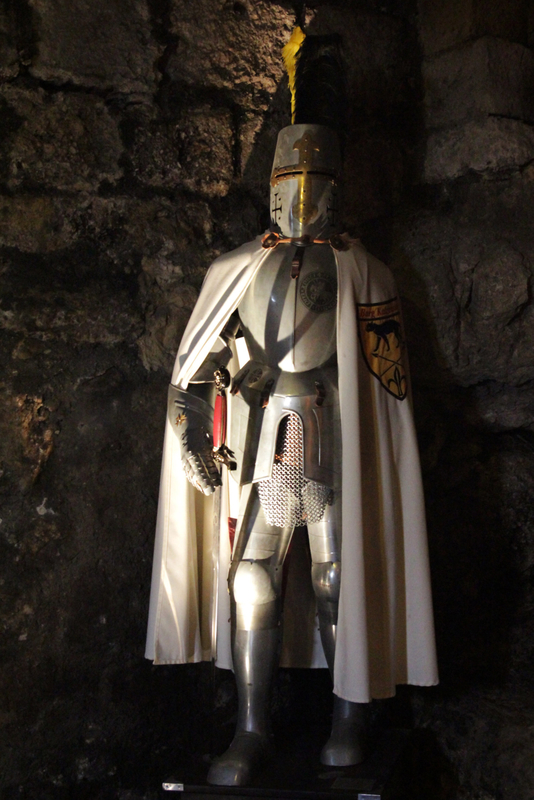We (Stephanie Chung and Jacob Wilson) are working on a multiplayer battle game with cards, a board, and a medieval fantasy theme. Chess but cool, perchance?
Concept Planning
The process for coming up with our game concept proceeded rather independently due to the abysmal weather and our packed schedules. After our Week 2 class, we jumped into brainstorming by first getting to know each other and where our respective hobbies and interests lie. After a couple days of independent brainstorming and sending each other Discord messages for spitballing ideas, we called on Sunday to sort through our brainstorming and crystallize a game concept we both liked.
Luckily, our ideas were along the same genre lines and fit together well. Steph had the idea of a build-and-battle format game: players would spend a couple rounds building up their player’s kit–with weapons, abilities, stat boosts, and the like–and then proceed into the battle phases of the game, where new mechanics would come into play. Jacob suggested a concept that, with a focus on the strategic/mental aspect, transcribed the fighting game experience into a board game, with movement and action mechanics that simulated video game combat akin to what you might see in Super Smash Bros. or Street Fighter. We decided that a chess-like grid would be best for this.
We decided to fuse these two game ideas and thematically frame the gameplay by setting it in a colosseum. Drawing on media such as Gladiator and Paper Mario: The Thousand Year Door for inspiration, our game would incorporate details like performing risky moves to win audience favor and earn tokens, shopping for upgrades, fitting fighters with various weapons, and including environmental variations or obstacles into the arena of the battle phase. One of the goals we kept at the forefront is to create a game with great potential for banter, sabotage, and interesting, direct player-to-player interaction.
During our Sunday call, we quickly hammered out basic details that we felt should be included in our game, such as classes, stat categories, gameplay procedure, win conditions, and class abilities. This call wasn’t exactly organized, but was rather a time for us to throw out any idea, regardless of how fleshed out it was; by firing off as many ideas as possible, we felt that we were able to settle on ideas that we liked quicker, without worrying about whether the idea was “good” or “developed” enough. Open collaboration and thinking out loud were key for this stage of brainstorming, and we put our ideas in a Google Doc.
Mechanic Design/Current Progress
The basic actions for this game would be, like in a fighting game, to move, attack, defend, or use an item. Cards would represent these, and players would hide their hands like in a game of poker to try and outsmart their opponents. We are currently thinking that players would be able to perform up to two of these actions per turn. These actions would be limited/enhanced based on the “class” the player would choose and the equipment they buy for said class, which could be an all-round hero or a glass cannon barbarian.
For ironing out the details of our game mechanics, we set up a folder on Google Drive. Inside of this, we put a Google Sheets document that allowed us to sort the building blocks of our game. The fundamental gameplay should be simple, but there are a lot of small details to keep track of, so we figured this would help. For example, we knew that the Build Phases and Battle Phases of the game would each require a variety of cards for players to strategize with. Thus, we designed sheet templates that allowed us to record the details for each card, in what phase they could be implemented, how many tokens they cost, their effects, some flavor text, and the number of card copies in the deck. We designed cards that would be included in the Build Phase draw deck, the Build Phase weaponsmith, and the Build Phase armory. We also designed consumable cards that would be specifically available at the shop for the Battle Phase, along with cards with various combat actions. These could be healing items or induce status effects (e.g. a speed boost).
Overall, we feel that game progress is going well. The concept is reasonably clear in our heads, and it is one that we think will provide for an enjoyable experience. Said concept is in need of playtesting with a prototype though, and there are more numbers and statistics to keep track of than expected. This will likely lead to a reduction in scope/complexity. Once we meet in-person, the framework we have set up will allow us to test and ideate further efficiently. As stated prior, we believe in this concept. But at the moment, it’s just a theory. A game theory. Thanks for reading.
